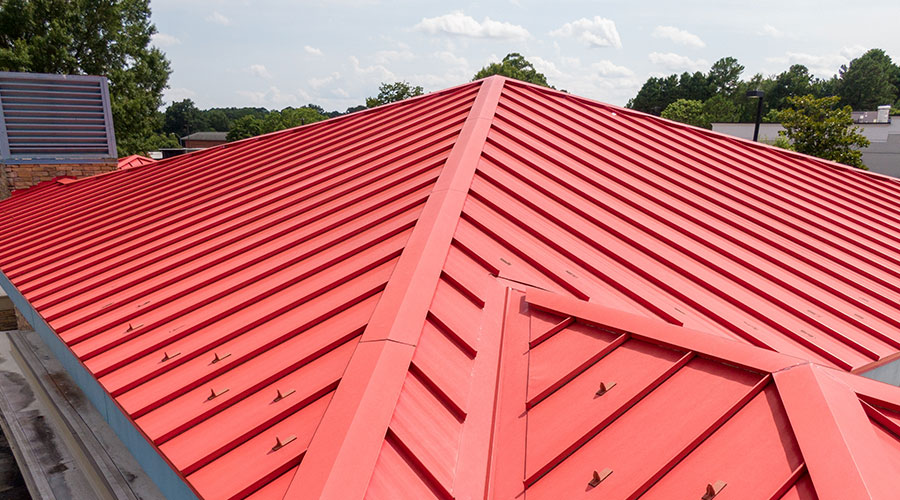Tips For A Successful RFP Process For Roofing
Follow these steps to ensure avoiding missteps when contracting for roofing construction or service.
The Request for Proposal (RFP) process can be complex for major building elements, and roofing is no exception. Perhaps the most important consideration is understanding when is the best time to consider replacing a commercial roof. Once building owners decide to initiate roof replacement projects, finding qualified roofing contractors and obtaining bids are other concerns.
When roof maintenance and roof repair can no longer prevent leakage or extend a roof system’s useful service life, consideration needs to be given to reroofing — that is, roof recovering or roof removal and replacement.
Reroofing should be considered in other situations, including:
• Repair expenditures become excessive
• Leakage becomes intolerable
• Maintenance no longer is able to address leakage
• Damage is occurring to structural components
• Damage is occurring to building contents
• Building use or occupancy type changes
• Building owner wishes to increase building thermal resistance
• Building owner wishes to increase roof reflectance
• Installation of a rooftop photovoltaic (solar) system
• Installation of a vegetative roof system
• Aesthetic reasons
Once building owners decide it is time for reroofing, a determination should be made whether existing roof systems can be re-covered or whether removal and replacement is necessary. It’s recommended such evaluations be made on a project-specific basis and conducted by a roofing professional who is experienced in roof system designs, materials, and application techniques.
For additional information about roof system evaluators, see “Collaborating with Consultants,” Professional Roofing Magazine, July 2013.
Once existing roof systems have been evaluated the next step is to design a roof system recover or replacement. Building owners often hire roof system designers to produce construction drawings that form the technical portion of RFP documents. Roof system designers may be the same person or company that provided the roof system evaluation for a particular project. Roof system designers may also serve as building owners’ representatives during the construction phase of projects.
Based on experience, input from building ownership teams, and evaluation of the existing conditions, roof system designers create RFP documents that typically include:
• Roof system contract documents. The elements of roof systems typically may include: roof coverings (the visible part of the roof), vapor retarders, cover boards, substrate or thermal barriers, insulation, and air barriers. Often there are more than one roof system that could be used; roof system designers work with building ownership teams to select roof systems for the RFP documents.
• Related work such as: repair of elements beneath roof systems like roof decks or other structural elements, temporary removal and reinstallation of existing mechanical equipment if needed, addition of drainage elements such as tapered insulation, roof drains or scuppers, flashings, edge metal and copings, equipment curbs, etc.
• Identification of building or energy code compliance issues. Designers of reroofing systems should verify specific building and energy codes that apply to a building and design a reroofing system that complies with the applicable codes and permitting requirements.
RFPs for roofing projects should include information necessary for roofing contractors to understand and price removal/repair of existing roof systems and materials necessary for replacement roof system elements. It is also important to provide information about issues such as:
• Mobilization and material storage areas
• Parking and site access challenges
• Allowable hours for construction to take place
• Construction noise or odor restrictions
• Requirements to provide construction area access for consultants or owner’s representatives
• Protection requirements for adjacent or interior areas
• Requirements for attendance at meetings
• Required construction mock-ups
• Required construction submittals
• Participation in LEED, Green Globes, RoofPoint or other green certification programs
• Insurance and performance and/or bid bond requirements
• Requirements for material and/or installation warranties
RFP documents should identify clear deadlines and other provisions such as mandatory attendance at pre-bid meetings and terms for bid disqualification.
Bid forms might be used for complex projects or when alternate or multiple roof systems are being priced. Generally, the more complete and detailed the RFP, the easier it is to compare submitted bids.
Lastly, it is considered good practice to invite at least three roofing contractors to respond to RFPs. This document created by NRCA provides some tips for finding a good roofing contractor.
Provide enough time from RFP announcement to the RFP submittal (bid) deadline for contractors to prepare thorough and detailed bids—two or three weeks for simple projects; considerably longer for complex projects. Setting aside time for bidders to view existing conditions and ask questions is also important.
Rushed RFP deadlines can result in erroneous or more expensive bids or contractors backing out altogether. Also, a process for contractors to submit requests for information (RFI) should be included in the RFP documents. A typical RFI process would typically include a method for submitting questions (question form; web site; email; etc.) and a method for all bidders to see submitted questions and answers. The RFI process should end prior to the RFP deadline so all bidders have enough time to adjust their bids if necessary based on the answers given.
When all bids have been submitted, building owners should receive enough information to make an informed choice assuming a thorough evaluation of the existing conditions was completed, a complete and detailed RFP and construction documents were prepared, professional and experienced roofing contractors were invited, and an appropriate process for job site access and resolution of questions was provided.
Jason Wilen, AIA, CDT, RRO, is Director, Technical Services with the National Roofing Contractors Association (NRCA)
.
Related Topics:












